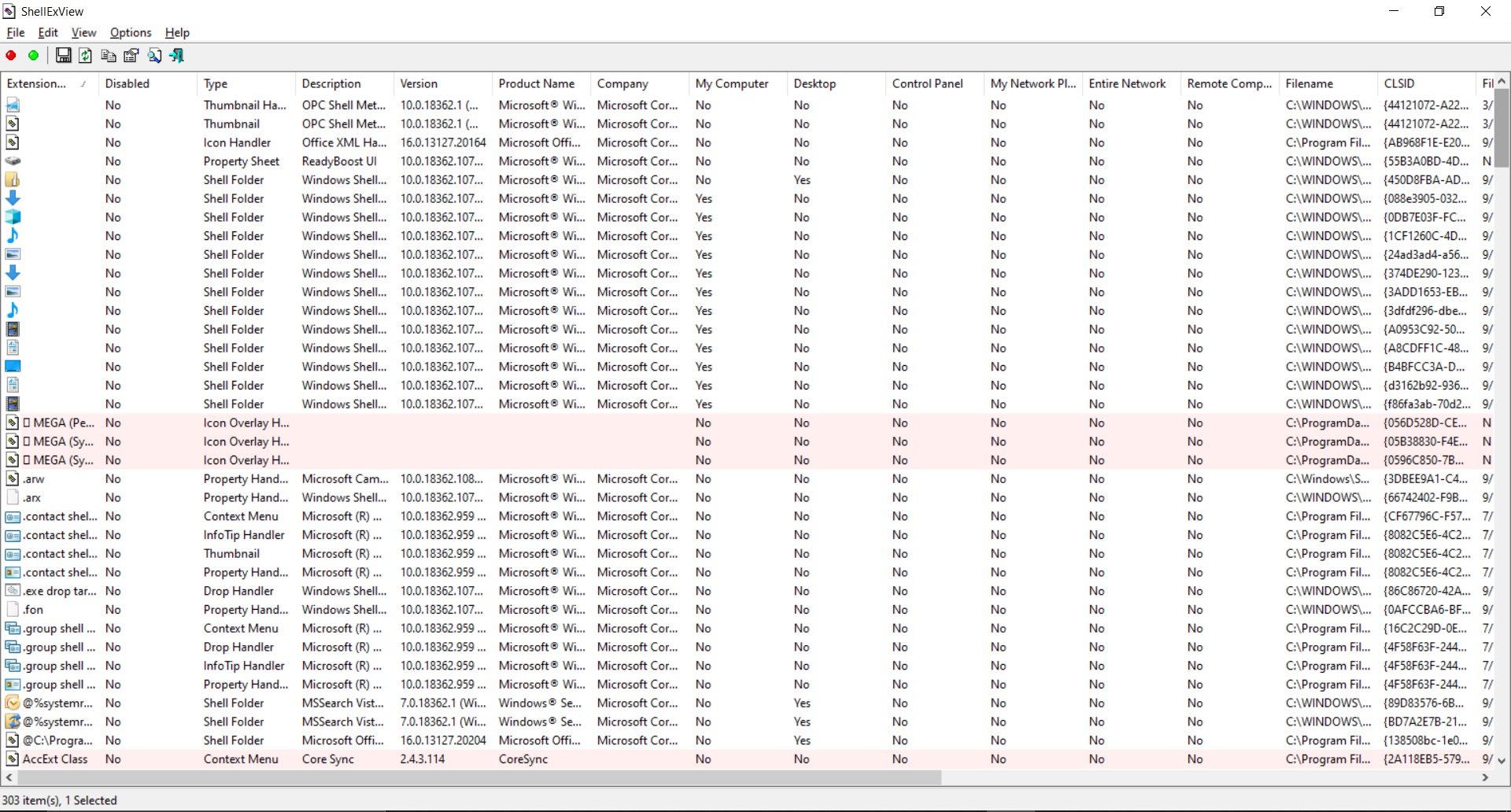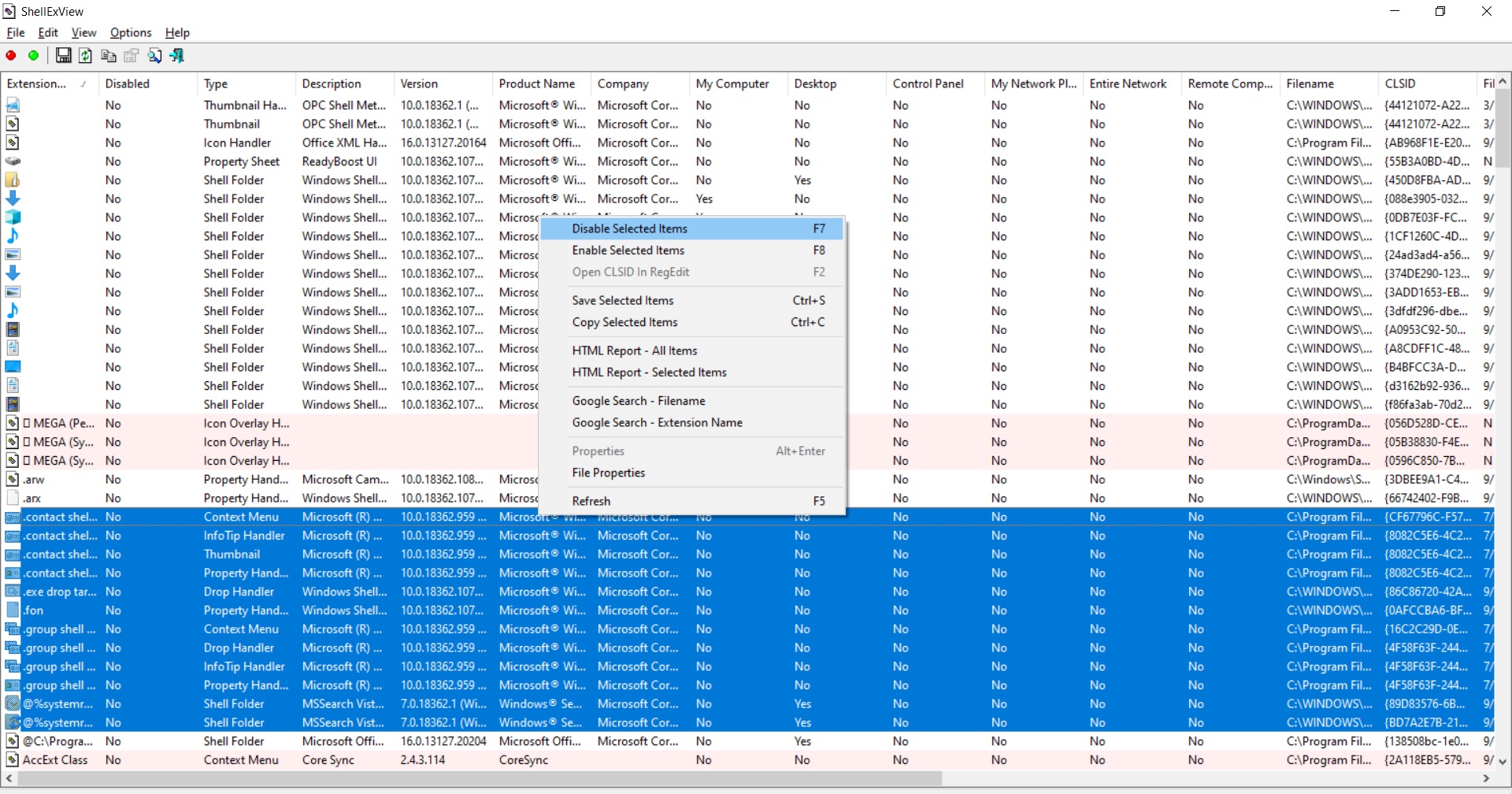Speed Up Your Windows Context Menu Using ShellExView
With multiple installations of third party software or numerous processes running in the background, the load up time of your context menu starts to degrade and it takes longer to pop up when your prompt for it to. Multiple extensions (especially third party ones that don’t run as fluidly naturally on your operating system) are to blame for these slow load up times. This issue can persist so far as to cause your system to hang or make your system unusable as it allocates all of its resources to starting up your context menu which may take anywhere from a few seconds to a few minutes to load up.
To speed this process up, you will need to remove context menu entries from your Windows registry. You can either choose to do this manually by heading into your Windows registry and individually disabling the many entries and processes (which is a painstakingly slow process) or you can opt to use Nirsoft’s freeware ShellExView (which we recommend) to get the same work done in a fraction of the time and without the hassle of heading into a complex registry or the risk of accidentally disabling some other integral process.
A Step-By-Step Guide To Using ShellExView For Disabling Third-Party Extensions
To use ShellExView for the speeding up of your Windows context menu, you will first need to download and install the application. ShellExView, a NirSoft freeware application tool, can be downloaded from this link. Ensure that your system meets the requirements as stipulated on the ShellExView page and then scroll to the bottom to download the freeware. You can either download and extract ShellExView from a zip file or you can download and install an executable file which will come with uninstallation support. We recommend doing the latter as that better sits in your system for fluid uninstallation. Using zip files and moving the extracted contents into your C drive directories can be a lot of manual work which will require the same amount of manual work if and when you choose to remove the application.

This screenshot of the ShellExView application shows the remaining extensions after hiding Microsoft Windows inbuilt extensions. Click on the executable download on the ShellExView page. Use the x64 version if you’re running 64 bit applications on your Windows PC. Download this file.
- Find the location of the executable installer (in your Downloads) and process the installation. A dialogue box will pop up and the on-screen instructions will take you till the end.
- Once the application installation completes, launch ShellExView by searching for it in the Start search bar at the bottom left of your Windows PC screen.
- As soon as you start up the application, you will immediately notice a large number of Windows shell extensions. Most of these are the innate Windows extensions so the first thing you will need to do to clear up your overcrowded view is to head into the Options tab at the top and click on “Hide All Microsoft Extensions.” Also ensure that “Mark Disabled Items,” “Mark Suspicious Shell Extensions,” and “Mark Non-Microsoft Extensions” are ticked too.
- Now your application view will show fewer extensions, particularly the ones you need to concern yourself with for the optimization of your context menu load up. You will still see a lot of extensions of third party applications in this view that you need to keep running or that are integral to your regular PC functions. That’s okay.
- The next step from here requires a lot of trial and error as you troubleshoot and try to diagnose which third

Use Ctrl + click to select multiple extensions and then right click on them as shown to disable them. party extension is slowing down your PC’s context menu load up. You can either disable extensions individually, start up your Explorer again, and see if the problem is resolved (if your context menu loads up virtually instantly). Another quicker way to do this would be to disable the extensions in batches and check by restarting the Explorer. If in one batch you notice that the disabling resolved the issue, zero in on that batch and start disabling sub-batches until you figure out which particular extension disabling resolves your issue. We recommend this latter approach.
- To disable an extension (or multiple extensions), select the extension or keep the Ctrl key pressed as you select multiple extensions individually. Right-click your selection and then click on “Disable Selected Items.” The Disabled column should read “Yes” beside the extensions that you have successfully disabled.
- Relaunch Explorer and check if your context menu load up time has improved. To do this, open up your task manager from the start menu. Find “Windows Explorer” and click on “Restart” at the bottom of the window.
- If it has not and you would like to re)enable the disabled extensions, select them again, head into the File tab at the top and click on “Enable Selected Items.”
- Repeat the steps above until you have identified the troublesome extension and disabled it. Once you have and you’re satisfied with your context menu load up time, you can close the ShellExView application or even uninstall it if you’d like. Uninstalling will not affect the disabling action that you’ve performed on a particular extension.
Final Thoughts
A common extension that causes the windows context menu load up time to slow down is the Google Drive “GDContextMenu Class” extension. Many users have reported this particular extension to be the troublemaker in their systems so it would be a good idea to try disabling this extension first before heading into the trial and error approach. It may well resolve the issue directly. If it does not, then you can carry on with the trial and error approach disclosed above. It will not usually take more than one extension to be disabled for your context menu to speed up so once your find the singular culprit and disable it, you can lay your efforts to rest. Your Windows context menu will now load up almost instantly and you won’t have to sit in front of a hung or frozen screen each time you attempt to access the context menu.





